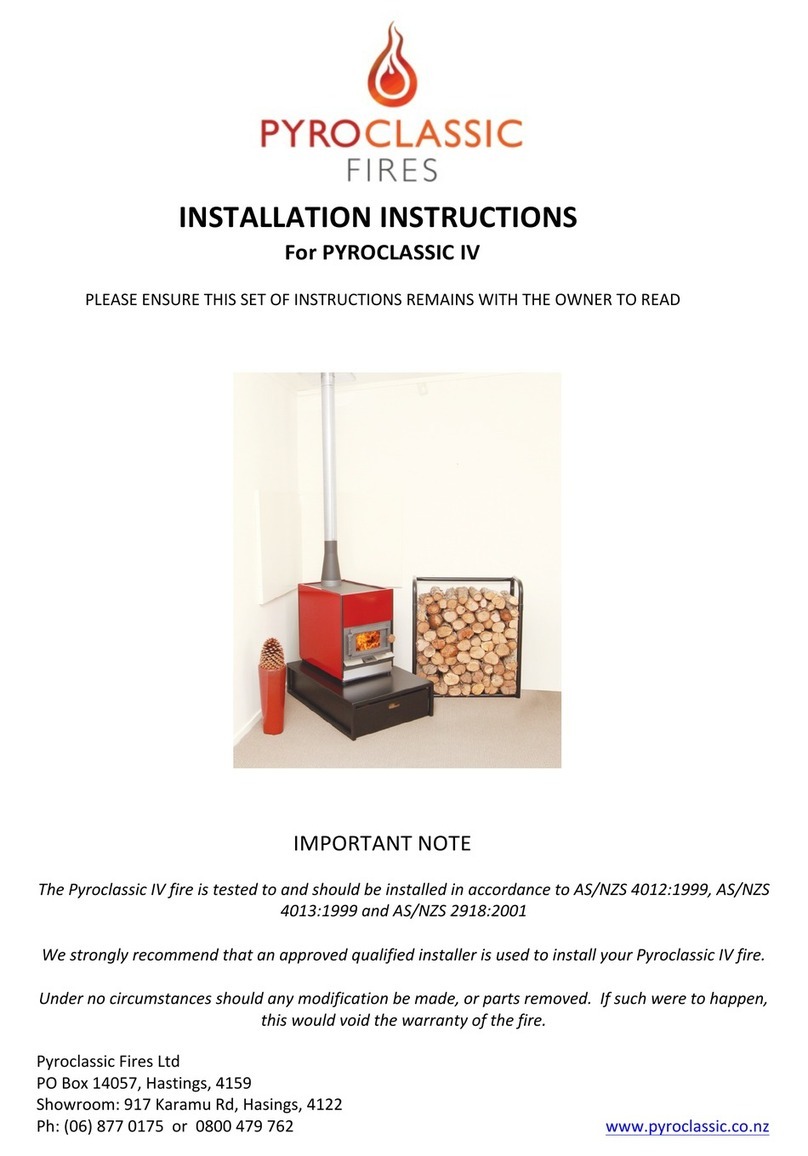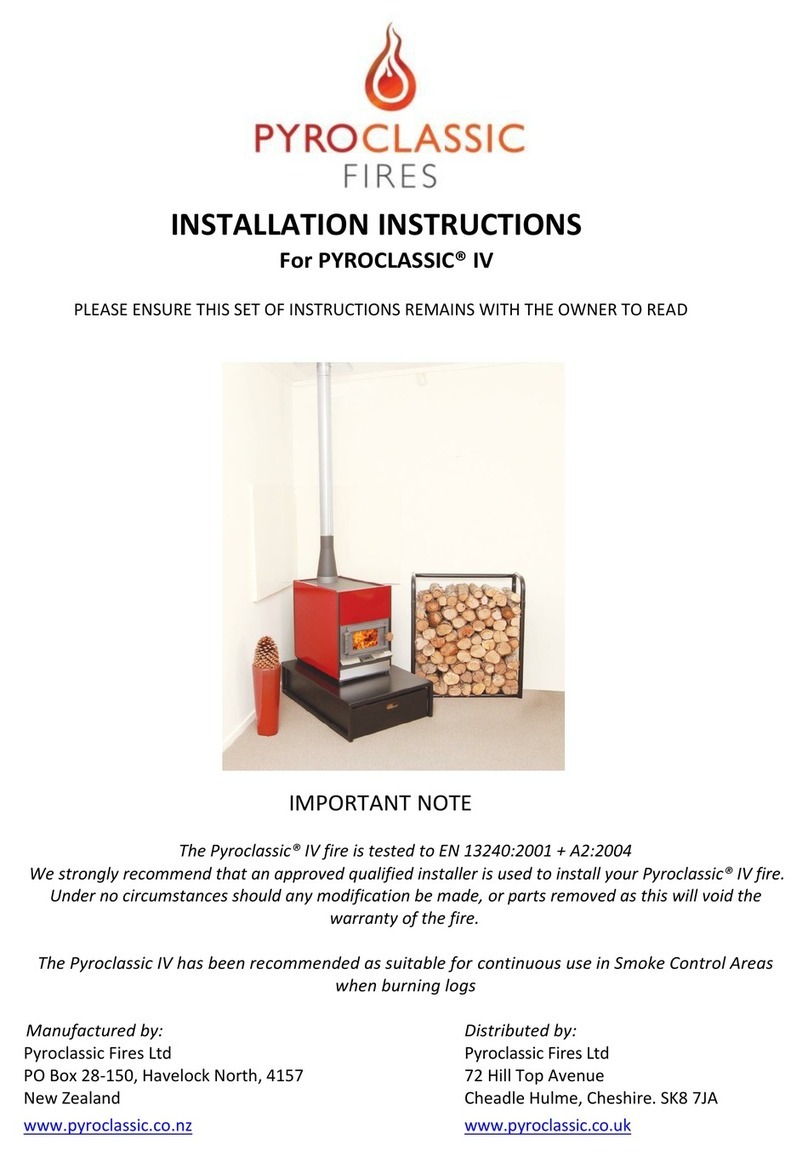OPERATING USE AND MAINTAINANCE
REFUELLING ONTO A LOW FIREBED
The woodfuel inside a Pyroclassic® IV fire burns best on a thin bed of ash and hot coals, however if there is insufficient
burning material in the fire bed to light a new fuel charge, excessive smoke emission can occur. Refuelling must be carried
out onto a sufficient quantity of glowing embers and ash that the new fuel charge will ignite in a reasonable period, add
suitable kindling if necessary. If a new fuel load is left without suitable ignition then a buildup of unburnt volatile gases
can occur, this can cause the unit to be put under stress when these gases eventually do combust causing a possible
internal explosion.
Always ensure adequate combustion and ignition of fuel and use the Turboslide as instructed.
PYROCLASSIC® IV IS SELF-REGULATING.
The vigorous fire near the loading door automatically slows down as the burning front advances through the firebox
towards the back. Each cycle ends with ash and hot ember at the far end of the firebox. Only use the Turboslide when
lighting, adding fresh fuel or if you quickly want a very vigorous fire.
The Pyroclassic® IV not only provides heat soon after start up but it also stores a lot of the heat from burning your wood,
you will get most of this heat back over several hours. Frequent reloading may result in high room temperatures but you
will soon know how much and how often to add fuel, the best heater output control is how much and how often you do
this. The Pyroclassic® IV is designed to save on firewood and to keep emission levels to the minimum by storing the
surplus heat which normally goes up the chimney; this heat is still being released into the room even when the fire is low
at the end of each burn cycle.
REFUELLING and using the CURVED RAKE PROVIDED
Use the rake to evenly distribute the hot ember and ash along the base of the fire box, ensuring that there is sufficient
hot ember at the front to provided adequate ignition to the fresh fuel load. Load the fresh fuel so that the logs are loaded
lengthways and that one end of each log is in contact with the back wall of the firebox, if you keep your fire burning under
the metal airtubes which run along the top of the cylinder, then this will ensure that the maximum amount for heat is
captured within the ceramic cylinder as the hot gases have the most distance to travel before entering the flue, this allows
the whole fire to retain as much heat as possible. When raking, avoid plugging the Turboslide inlet with char or ash (this
is the hole covered externally by the Turboslide below the door). Using other tools may cause damage to the ceramic
cylinder, always take care not to impact the ceramic surface.
DOOR/DOORKNOB
DO NOT run the fire with the door open, it will never reach the correct operating temperature and can be very dangerous.
To protect the door gasket and allow the door to be opened easily, DO NOT OVERTIGHTEN THE DOORKNOB. As the door
seals with little pressure it may become hard to open when the unit is very hot. Load it after it cools down, the door then
opens easily.
If you are finding the door knob too hot when trying to refuel your fire then you are probably trying to refuel too soon,
the door knob is a great indicator of what’s happening with your fire so if you can’t reload then you don’t need to yet.
If your door knob is starting to show signs of charring then you are probably burning your fire too continuously near the
back of the door and possibly need to close the Turboslide sooner and let the fire burn further back in the fire chamber.
Do not lean on the door or use it to help you stand up when it is open as this can cause the door to move, if
your door does become misaligned then you will need to loosen the top bolt going horizontally through the
hinge bar and lift the door back into the correct position for the spindle to line up and then re tighten the bolt.
AIR INLETS
DO NOT block any fixed air inlets, this can result in damage to the fire.






























